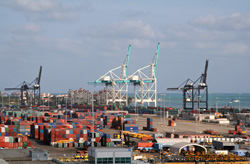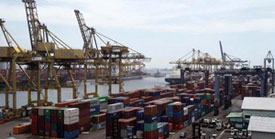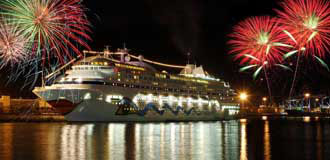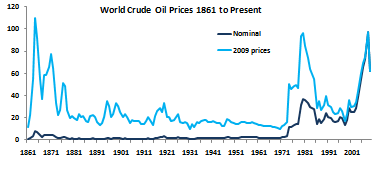| |
Issue 7 : March 2011 |
So after a six month gap in newsletters from May to October last year we have managed just five months to this newsletter. Not a sign of less work but more likely better delegation or improved accounting methods to estimate the time between newsletters!
My background is engineering. Many of my family were and are in education. It often leaves me wondering about the difference between the “real” world and education. A sharp line sometimes appears between actually making things happen, getting a project built, making the refinery work and talking about such things. Similar distinctions often occur between engineers and banking/finance/business managers and even |
 |
information technology specialists. So it was interesting to be on the receiving end of a polemic against consultants who were accused of not living in the “real” world.
Sobering when it was delivered by another consultant in front of a gathering who had just witnessed proof that often consultants do know rather more that their clients and should be allowed to design and build projects with less not more interference from the clients’ “real” world. The real difference is perhaps between those who gain a broad perspective on the factors and influences that impact decisions and those that do not. This does not require a specific background or knowledge set, but a willingness to always try and see things from the varied points of view of others. You may not agree but at the very least it will improve your capacity to address their arguments.
As always it will be interesting to get your feedback on our opinions and comments in this newsletter, just contact me on [email protected]
|
Port Planning and Industrial Policy
“You have to go where industries are” was the quote from a senior container shipping company executive recently. Given the long lectures on the need to understand the markets I usually give during port planning workshops I clearly agree. However there are limitations and different perspectives that need to be maintained. This is particularly the case when planning a major port expansion or a new port on a green-field site. Consider the decision that the Government of Indonesia is contemplating at present, “How we should expand port capacity to serve western Java?” The immediate imperative of delivering more capacity at the Port of Tanjung Priok (Jakarta) is obvious; a “TINA” situation (There Is No Alternative).
 |
|
It is clear from studies and discussions with stakeholders that the focus of container generation in the region is somewhere slightly east and south of the existing port of Tanjung Priok. Container shipping lines will consistently insist that the sensible location for a new port has to be to the east of the existing port. From the port planner’s perspective a port to the east involves massive capital expenditures because of the deep volcanic alluvial deposits present at such sites. |
Further, achieving an appropriate water depth will require substantial capital dredging and may impose high dredging maintenance costs. If these were not enough to put the poor planner off sites to the east, the use of fertile land for port sites, the resettlement of sometimes densely-populated areas and other land issues associated with the port itself could be fatal to any proposed development. Never mind the development that may follow as industry chases the port. For the port planner there are much more attractive sites to the west, away from the existing market foci. Bojonegara, for example, was proposed as a potential site for a port when the Dutch were looking over a hundred years ago and has lower capital demands. Here the land in the port region is, if not barren, certainly less fertile and considerably more easily available easing but not resolving land issues for the development of the port and all those industries that would seek to develop close by the port. The example of Laem Chabang is perhaps instructive. When proposed it stood 100km from the market it supported in Bangkok. Now it is the focus of a successful and expanding industrial zone away from Bangkok. It is a success as a port and as an industrial development policy that creates economic activity and most importantly jobs. Food for thought for planners and an instructive example of when the market may not be the best guide to decisions; for the Government of Indonesia it poses a problem. The development of Laem Chabang was heavily criticised when proposed and it looked rather like a white elephant in the early days of operation and in such observations you see the political risk.
Tanjung Priok Feasibility Study
 |
|
DWA has nearly finished the feasibility study for Kalibaru, the next development for the port of Tanjung Priok. At least the draft final report has been delivered. It has been fascinating to study how to deliver as quickly as practical very substantial new capacity in a very congested port. Hopefully they will now be able to double the container handling capacity of the port over a period of three to four |
years. For those of you who know the port we shall be avoiding adding to the road traffic issues that already exist by providing a completely new access road into the new terminals.
Transhipment is a Bust not a Blast
It is a consistent wonder that so many container terminals are promoted by developers and governments as “transhipment hubs”. I am sitting in a conference right now listening to the explanation of the plans for Nam Du Transhipment Port Development in Vietnam. A most impressive and well put together paper. It is an interesting concept for bulk cargo. I may have a few issues with competition from point-to-point logistics costs but, given the scale and quality of companies I have heard discussing such concepts recently, something may gel in the near future. For containers though there remains a key “practical” fact. Most container shipping executives can explain their view of transhipment in a single statement: “a cost we don’t want to pay”. It is a cost, only a cost, it never adds to the revenue of the line. It does not create business. In reaction to this fact the lines’ management of transhipment cost is tight, effective and ruthless.
Terminals should be aware of this. Transhipment makes sense for them if they have spare capacity because it tops up the revenue line nicely. However should they undertake an exercise on the value of building capacity to allow them to undertake transhipment the financial results they will achieve will be somewhat disappointing. Transhipment will not support the construction of a terminal; the exception of course being if you are a shipping line seeking to reduce your costs or your site has massive geographic dominance that others cannot easily replicate.
Normal practice in the financial analysis of terminals is to assume revenue will grow in line with the total volume handled. The revenue from transhipping a container will be lower than loading or unloading that container. It needs to be understood that as the percentage of transhipment increases, revenue per TEU falls.
When making a financial assessment of an expansion, a valid exercise is to remove all transhipment traffic from your terminal assessment and understand the improvement in performance and how much longer you do not need to build more capacity. Consider your performance as a pure origin and destination port first. Then consider the additive value the transhipment volume really brings.
If governments and developers do not believe me consider the following couple of examples of the benefits of transhipment and what they might mean for the assessment of terminals. First look at the financial performance of Kingston in Jamaica. Somewhat less than stellar as an investment. Then to show perhaps differences in perspective look at the performance of Freeport in the Bahamas and think about the reasons for MSC holding those shares.
The Return of the Cruise Terminal!
 |
|
After a short lull in our work in the cruise sector I am very pleased to have a good excuse to visit Cruise Shipping Miami this March. Meeting a few old friends and making new ones as we test the market for a new set of destinations will be fun.
It is interesting to note that the organisers are trying to push harder the third |
gathering of the year to join the Miami and European versions. The reports on previous gatherings in Asia were not positive but perhaps having it in Singapore will allow a new spark into proceedings.
Security of Oil Products Supply, Price Volatility and Financial Instruments?
Security of supply, forward contracts, contango and derivatives often appear to be strange financial terms that do not impact the real world; but they do. They exist and some of the products or services they define or represent have developed over time because they connect to the real world. Contango is where the price that is to be paid in the future under a futures or forward contract is higher than the spot price being paid today. Forward and futures contracts were a creation that allowed people to secure the price of raw materials they needed for their business. Derivatives emerge as methods of assisting people managing the risk inherent in their business and in particular international trade. In order for this to work The Futures Market has to be sufficiently liquid that you can easily and quickly buy or sell a position, there must be many players; enter the speculator...
At present the Chinese seem to be pursuing strategies that directly assure them of security of supply perhaps driven by the Peak Oil theory or a Malthusian view of the future; there is after all only so much of our planet. The Peak Oil the theory is often cited as a major concern and long-term driver of oil price. The prime prediction tool is the Hubert Curve that predicts how an oilfield’s output grows and then declines due to the physical nature of oil deposits. This is extrapolated to a country’s and in extremis the world’s production of crude oil. Supporting evidence for the efficacy of the curve is advanced. King Hubert was right about the peaking and decline of US oil production. Ignored in this “effective” prediction of course are the large areas of known oil reserves where development is not permitted such as offshore California and the Alaskan Strategic Reserve. These when you digest the implications rather dents a key element of the theory’s much vaunted verification. Not to say the theory is wrong. Strong verification does exist that the Hubert Curve works well for fields and even linked fields (basins). Its use in aggregation of none-linked fields is however unproven so Peak Oil remains a theory without strong verification. Crossing over to economics Peak Oil is a Malthusian style theory and is supported by such thought processes. As ever Malthusian’s cite population growth and the link between population and consumption. Interestingly of course per head consumption in developed countries peaked in the 1970s and has been falling; this may reverse as China and India grow but those of a more Cornucopian outlook may suggest that these may also drive the innovation required to accelerate per head consumption falls.
| When I look at Peak Oil and related ideas long term time series information often provides insight. This is a plot of the price of crude oil since 1861 (benchmarks adjusted to ensure comparable quality maintained!). There is sufficient evidence, I would suggest, to support a wide range of theories on why prices move in the market. |
|

|
The oil crisis is clearly evident and the volatility over the last few years is symptomatic of some significant changes but what that is who knows? It may be indicative that many rely on the liquidity of the market to always deliver what they need when they need it. Shortage in the market then drives the price rapidly upward only for it to fall when the supply demand balance moves back in favour of users. This certainly has been the conclusion of many of the commissions and enquiries that have been charged with investigating, by those pursuing speculators and financial instruments for being the evils they may not actually be. Returning to Peak Oil there is some support in market volatility for the theory but nothing like a smoking gun as yet. More about this subject next time!
|